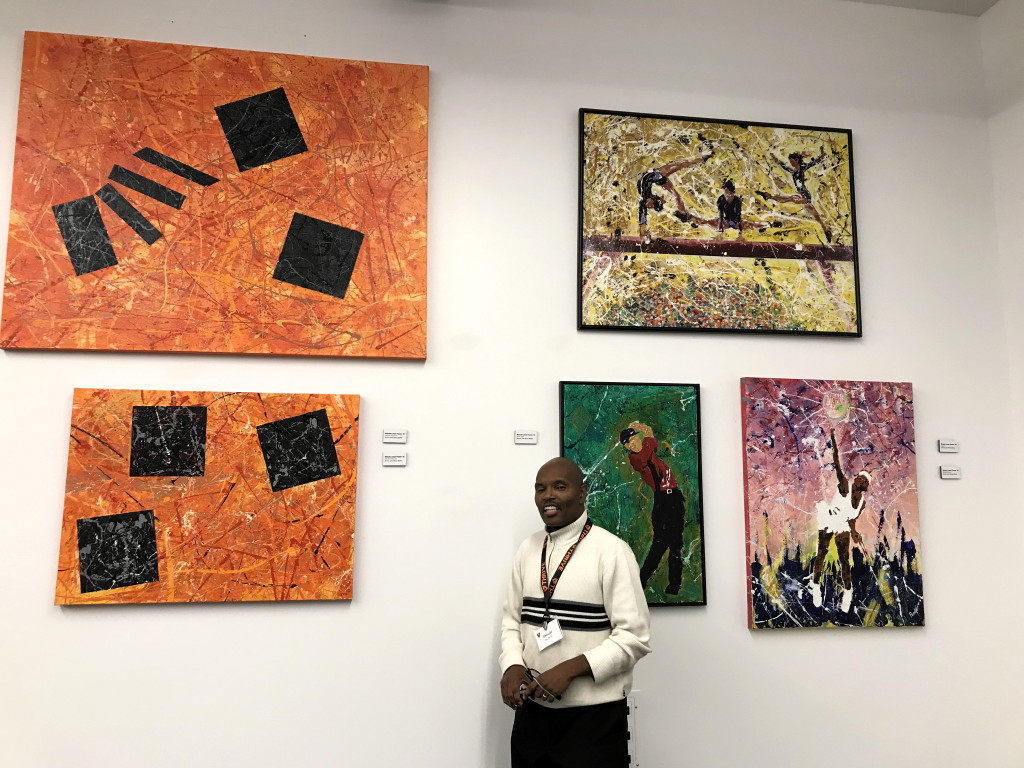By Pam Hersh
I have a dream – certainly no comparison to the enormity of a Martin Luther King, Jr., dream, but nevertheless a dream related to Dr. King’s mission and the passion of a Princeton artist, lawyer, and social justice activist Rhinold Ponder.
My dream is to utilize the now sadly underutilized space of Dohm Alley, the alleyway between Starbucks and Landau’s on Nassau Street, to promote the just launched Art Against Racism: Memorial. Monument. Movement project, a virtual interactive video exhibition. Organized by a New Jersey-based coalition of artists, educators, writers, curators, attorneys, journalists, and activists of diverse race backgrounds, the project will document and exhibit the outpouring of artwork protesting Black lives lost to police violence and raising awareness about taking action by voting. And the perfect spot for this initiative is at Dohm Alley, which is artistically dormant right now, but has the infrastructure and mission to make it a home base for this inspirational exhibition.
The concept for Art Against Racism: Memorial.Monument.Movement originated in a conversation between Rhinold Ponder, who is Black, and another renowned Princeton artist, Rutgers professor emerita, and social justice activist Judith Brodsky, who is White, about building on the success of last year’s “Art Against Racism” exhibition series. In July 2019, Rhinold became the founder and co-organizer of the compelling “Art Against Racism” juried exhibition, a platform to promote social justice, inclusion, equity, the power of voting, and anti-racist community building.
Since the murder of George Floyd, artworks protesting Black lives lost to police violence have emerged all over the world. Art Against Racism: Memorial.Monument.Movement was created in response to this moment and will be presented on a “groundbreaking video platform beginning Oct. 3, at 5 p.m.
This is a grassroots project welcoming all voices, both professional artists and those who express themselves in other forms,” Rhinold said in a press release soliciting artistic contributions.
Contributors are submitting short videos about their work that will reflect how art is a powerful tool for creating a just society. “Ultimately, the interactive exhibition will become a living archive for preserving the breadth of art inspired by the Black Lives Matter Movement,” Rhinold said. Themes include racism, police violence, mass incarceration, African American historical figures or moments, murdered and martyred victims of racism and white supremacy, civil rights, and community needs that have been affected by systemic racism. The work can take the form of sculpture, projections, street art, quilts or other fiber works such as crochet or beadwork, culinary creations, spoken word, performance, music, posters, murals, animation, digital projects, crafts, replacements for toppled statues, or other creative forms of expression.
My entry into this endeavor is Dohm Alley, a project of Princeton Future, whose goal in 2017, the year of its creation, was to showcase art, sculpture and ideas in an open air gallery setting that is 80 feet long and 11 feet wide. Its creators Kevin Wilkes and Peter Soderman, known for two prior spectacular public art installations in Princeton (Writer’s Block and Quark Park), dubbed the alley project “a dynamic sensorium, that is part garden, part classroom.”
Its stated goal at that time was to invite pedestrians into a lively and interactive experience. For a couple of years, the alley lived up to that description with an exhibit that focused on the period of the English Romantic poets and used poetry, landscape elements, sculptures, artwork, audio and video to create an other worldly experience. After the English Romantic poets’ exhibits were removed, along with other sculptures and paintings, the alley never regained its mojo. A variety of funding and organizational challenges, with the most recent challenge being the pandemic, have kept the alley in a state of aesthetic limbo. On the alley website, it says “that the alley would be examining additional topics other compelling contemplations on the state of current culture.”
But with the proper precautions (mandatory masks and limiting the numbers in the alley at one time), the alley’s mission could be resurrected to address the current compelling social justice issues of the Art Against Racism project.
All “we really want to do is educate and engage the public about the importance of persistent and intentional anti-racism action,” Rhinold said. And I can’t think of a better way to educate and engage the public than by taking a compelling contemplative walk through Dohm’s Alley.
The deadline for artists to submit, in order to be included in the Oct. 3 opening, is Sept. 14, but artwork will continue to be accepted until Inauguration Day, Jan. 20, 2021. To participate, view the prospectus at https://sites.rutgers.edu/mmm/




